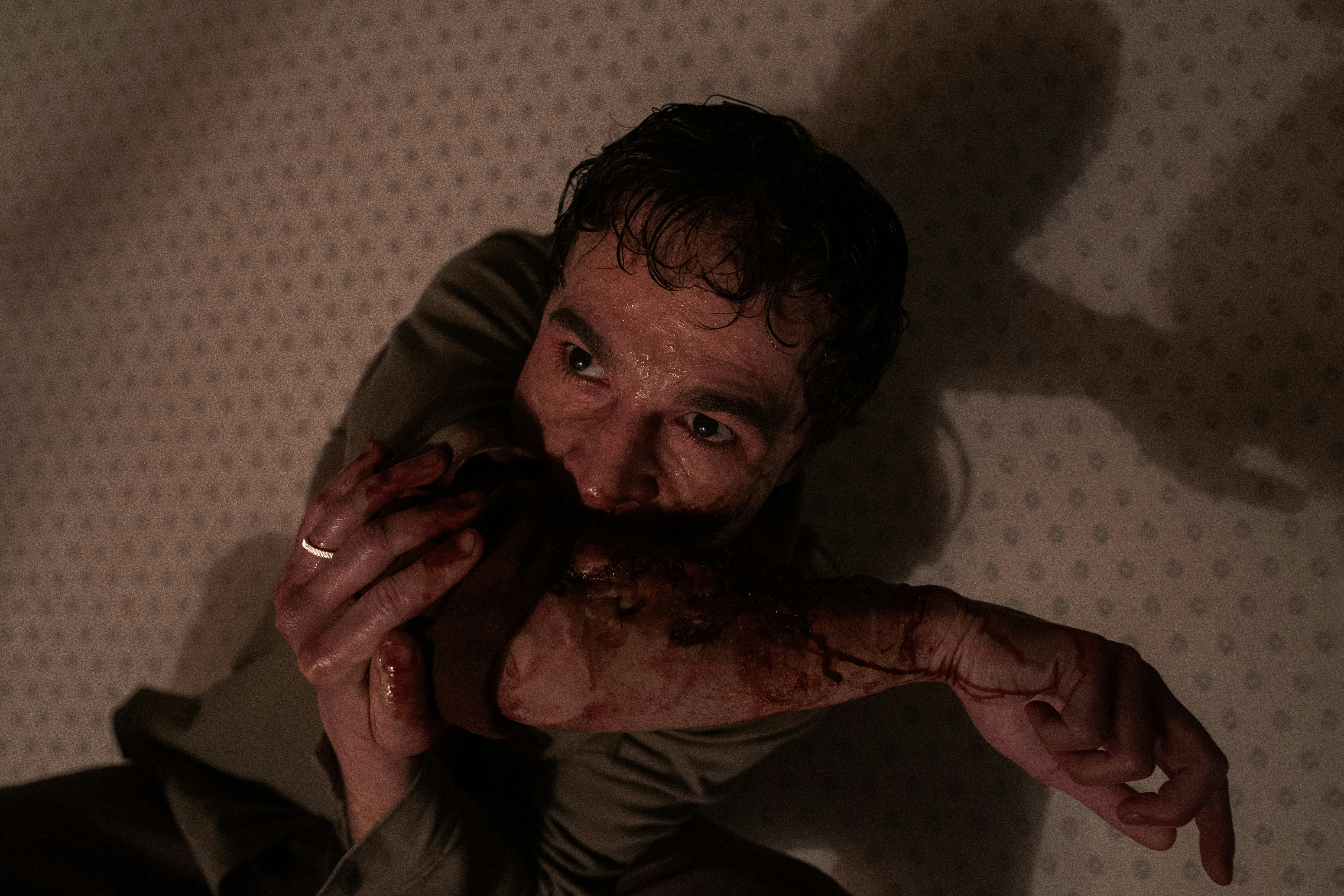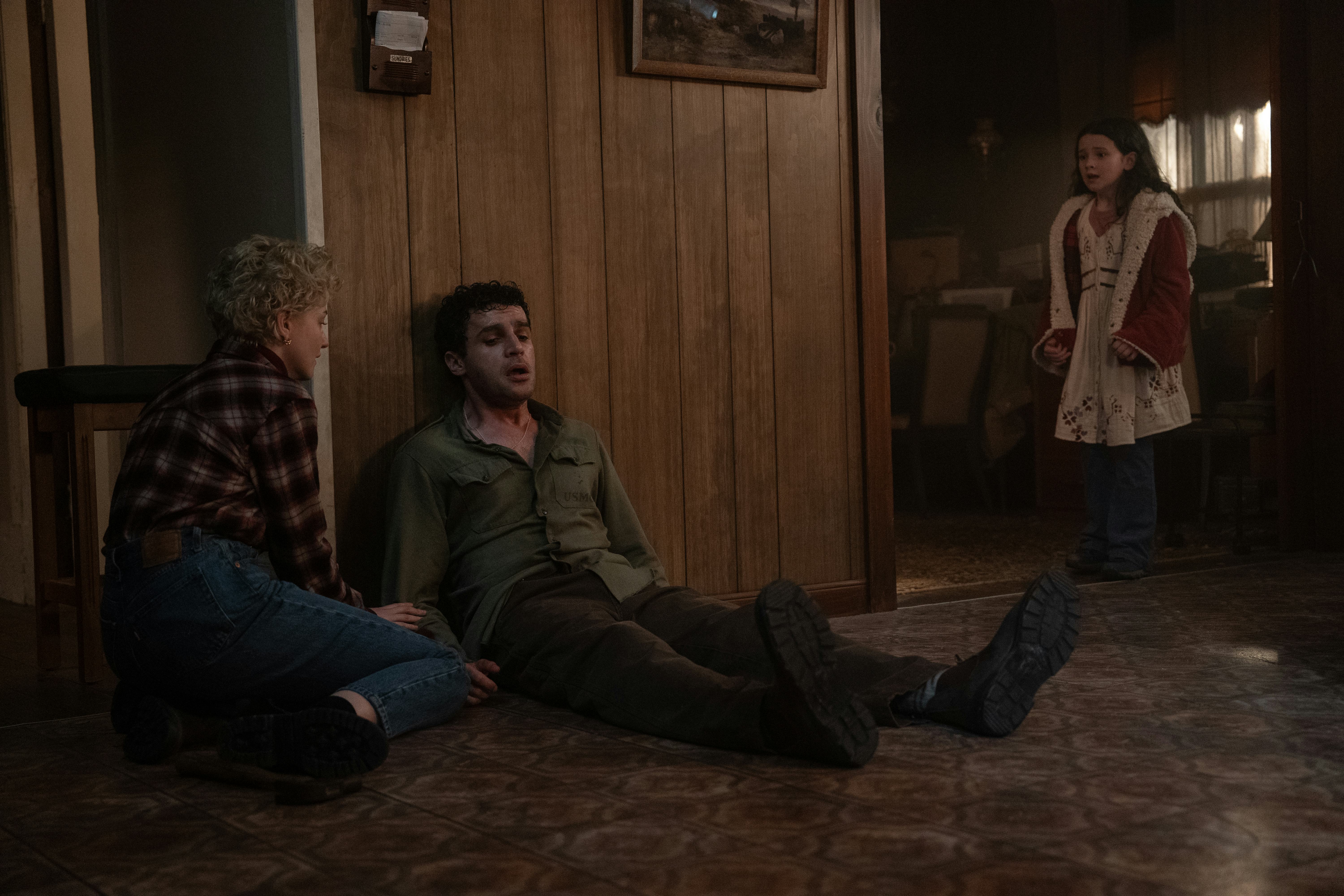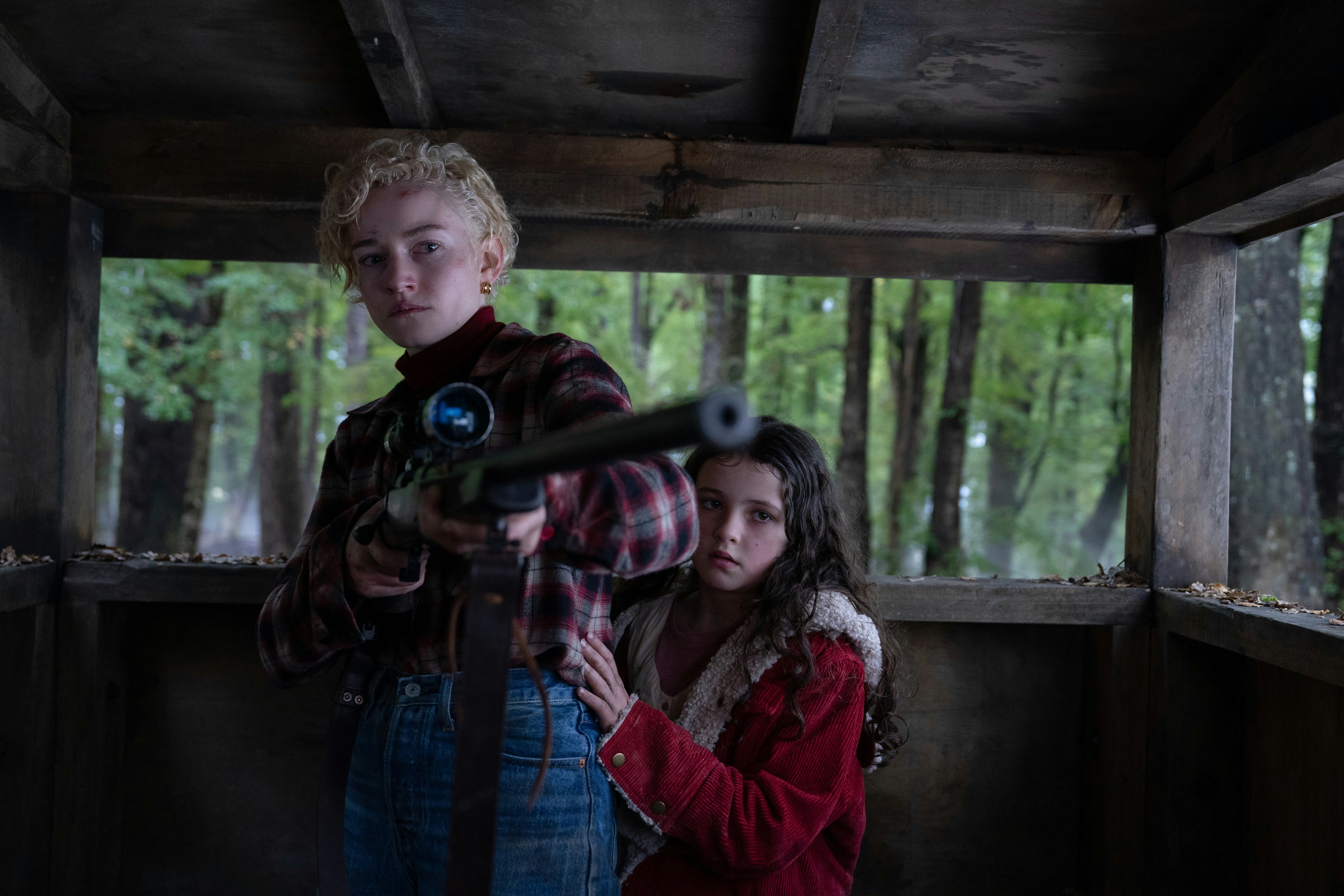
Five years ago, Leigh Whannell did the impossible: He made the Invisible Man into a truly terrifying modern monster. Instead of the mad scientist forced to wear dorky headgear, Whannell’s Invisible Man was an abusive ex-boyfriend who used his technology to torment the woman who left him. It was an ingenious update on a dated character that also inadvertently kickstarted the “horror as trauma” subgenre.
Now, Whannell is back to update another Universal Monster with Wolf Man, a taut, claustrophobic little thriller that gives a body-horror-inspired makeover to the famous cinematic werewolf introduced in Curt Siodmak’s 1941 film The Wolf Man. While not as revolutionary as Invisible Man was, it’s a rock-solid thriller that makes the most of its 103-minute runtime.

Wolf Man opens in 1995, with a title card describing the disappearance of a hiker who allegedly contracted hill fever, though the disease had “another name” according to Indigenous people of the Oregon wilds: “Face of the wolf.” It’s with this ominous introduction that we’re dropped into the life of young Blake Lovell and his hard-edged father, Grady (Sam Jaeger). Grady is trying to toughen up his son with a hunting expedition in the woods when they spot a strange silhouette in their scopes — what appears to be a half-naked man, hunched over and growling. It’s the first of many silent jump scares that make up Wolf Man, an exercise in building dread up until it reaches a gory boiling point.
Cut to 30 years later, and Blake (Christopher Abbott) has left life in the Oregon wilderness for San Francisco, where he’s married high-powered journalist Charlotte (Julia Garner) and become the doting dad to his young daughter, Ginger (Matilda Firth). But when he receives a notice that his father has been declared dead after going missing for years, he packs up his family to clear out his dad’s old farmhouse. While driving the twisting narrow roads back to his childhood home, they’re attacked by a manlike creature, which scratches Blake on the arm before they take refuge from it in the farmhouse. Slowly, Blake falls ill to a strange disease, frightening his family as he becomes more and more inhuman.

Most of the chatter leading up to Wolf Man has been around the final look of the titular monster, which has been met largely with disappointment. What’s truly confusing is why the studio gave us the final look of the monster in its trailer. This entirely misses the point. Whannell doesn’t put much stock on making the final look terrifying — but it’s the gradual and inevitable loss of one’s humanity that becomes the real horror.
Whannell is keenly aware that audiences know going into a movie called Wolf Man that a man will, at some point, transform into a wolf. So Whannell and co-writer Corbett Tuck play into those audience expectations by placing the focus of the movie’s scares into that transformation. The film embeds us deep in Blake’s POV as he begins to fall ill — he speaks to Charlotte and Ginger, but they only look at him cautiously, concern painting their faces; he starts to lose control of his fine motor skills, his hands trembling when he wields a hammer; then when Charlotte and Ginger speak to him, it comes out garbled and distorted. Soon his world takes on a blueish hue, like he has permanent night vision (or as if he’s stuck in Stranger Things’ Upside Down).
Whannell and cinematographer Stefan Duscio convey each distressing little change with camerawork — swaying and tipping over when Blake suddenly faints, or having the light around Blake slowly dim as he loses himself to the infection. And when the body-horror elements begin creeping in — welts forming on Blake’s face, his flesh melting off his arm, his teeth ripping out — Whannell switches the perspective over to Charlotte, to show the full horror of how Blake has transformed. Whannell doesn’t shy away from truly disgusting gore, channeling David Cronenberg at his body-horror best — not just in the blood and viscera, but in the fear of losing control of one’s bodily functions and, ultimately, autonomy.

While Blake’s transformation, and the abject horror of losing control of one’s body, is clearly the most inspired part of the film, the rest of Wolf Man is fairly by the book. Whannell, who introduced some of the most terrifying contemporary jump scares with Invisible Man, mostly feels like he’s operating on autopilot with Wolf Man’s scares — they’re pretty standard, though effective. It’s clear that most of his interest is in the dread of the transformation, and less so the jump scares. Even the film’s central metaphor of the wolf disease as an inherited debilitating illness (akin to Alzheimer’s or dementia) feels halfhearted, despite Whannell delivering such sharp metaphorical horror with Invisible Man. Abbott, fast becoming one of modern horror’s best performers, does his best to convey the horror of losing himself in front of his family, displaying a lovely and endearing chemistry with his daughter, but the script doesn’t quite give this central relationship a strong enough foundation.
Whannell and Tuck’s script is pretty sparse, getting Blake and his family to the isolated farmhouse with little more logic than “it’s for the plot.” Apart from Blake, who is lent incredible depth and pathos from a terrific Abbott, the characters mostly serve as pawns to be moved along by the plot. Garner and Firth give solid, if not particularly spectacular, performances as the wife and daughter forced to contend with the fact that their loved one is becoming a threat, but the movie doesn’t ask much more of them. Thankfully the film’s short runtime and its one-night setting masks the script’s shortcomings.
Wolf Man isn’t necessarily reinventing the wheel when it comes to monster movies. But it’s a taut and effective little thriller, one that finds new terrors in a well-worn horror genre. It may not exceed our expectations — the man does, indeed, become a wolf — but it at least keeps us terrified the whole time.
!["[T]he First and Fifth Amendments Require ICE to Provide Information About the Whereabouts of a Detained Person"](https://images.inkl.com/s3/publisher/cover/212/reason-cover.png?w=600)






